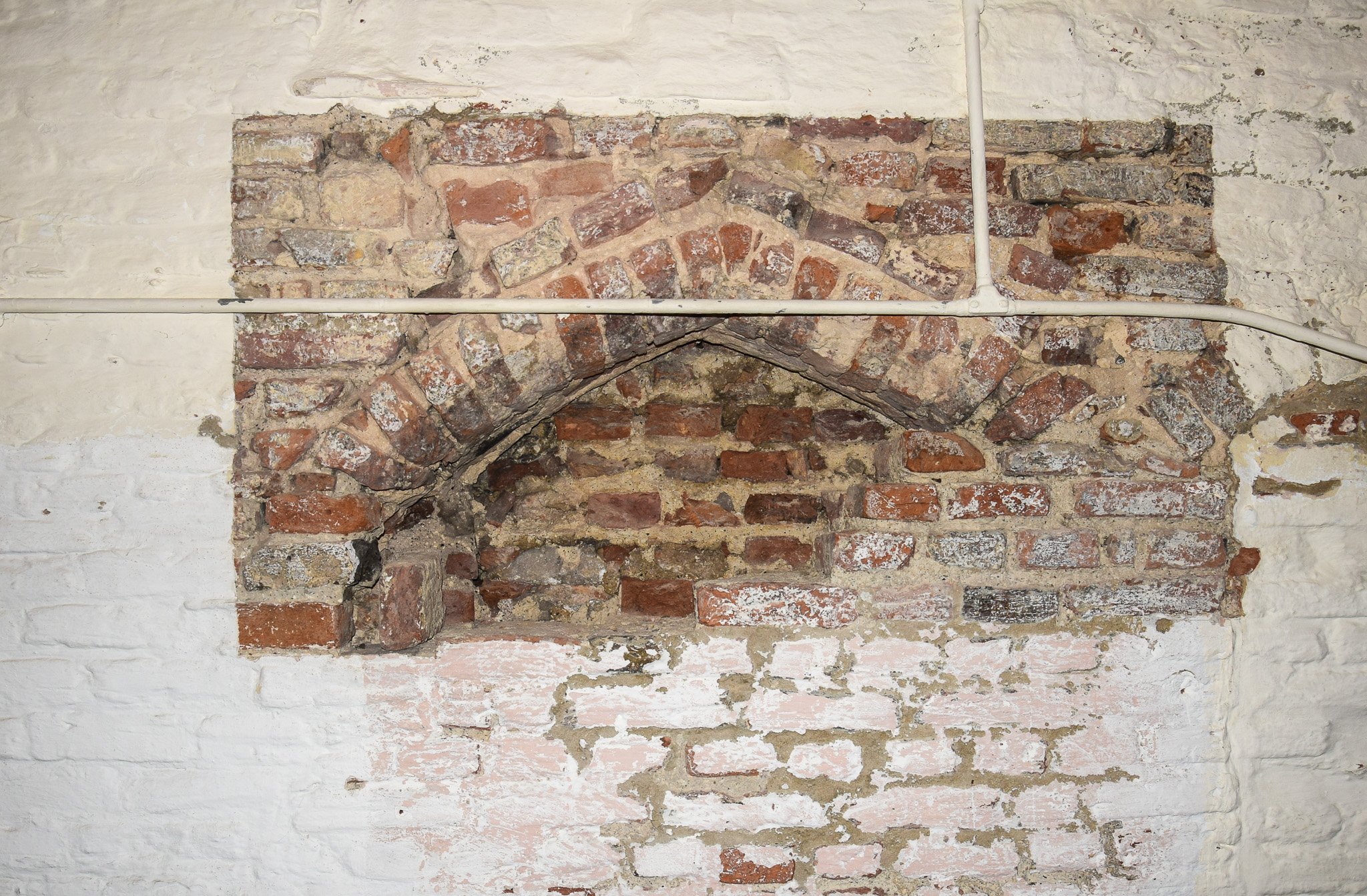
Britain’s oldest working theater is turning out to be fertile archaeological ground. Following last year’s discovery of Elizabethan-era floorboards that Shakespeare himself may have trod upon, the doorway to a dressing room that the Bard likely frequented has just turned up at St. George’s Guildhall.
“Finding a previously unknown door started in the 1390’s is super exciting,” remarked the theater’s creative director Tim FitzHigham, over email. “It’s like being a kid and getting a Christmas present.”
According to Guildhall, FitzHigham had spotted “a strange shape in a wall on the theater’s ground floor hidden behind two phases of plasterboards.” Experts of all stripes have been in and out of Guildhall amidst its massive, ongoing conservation and renovation. So, FitzHigham recruited Jonathan Clarke and plaster specialist Paul Wooles to take a closer look.
First, the team removed a notice board—and found a second notice board behind it. Upon removing the underlying 18th-century brick wall, they uncovered an archway. FitzHigham figures it must date to the theater’s original construction, because it helps hold up the roof.
Merchants, judges, and students have all utilized St. George’s Guildhall during its diverse, centuries-spanning tenure. King Henry IV established the venue to serve the Guild of St. George. In its statement, Guildhall stated that the newly discovered doorway once led to the Guild Robing Room, where high ranking officials dressed before dining upstairs.
St. George’s Guildhall. Courtesy of the Borough Council of King’s Lynn & West Norfolk.
Guilds were the social clubs of the medieval era. St. George’s Guildhall said this site probably hosted entertainment from the start. It definitely became a major destination on the touring circuit by the late 16th century. Records show that Shakespeare and his actors were playing in King’s Lynn from 1592 to 1593, while London’s theaters were closed due to the plague. Local legend corroborates that they performed at this very venue.
By then, Clarke believes, the Guild Robing Room became a dressing room for performers, due to its humble dimensions and position within the Guildhall. “It would have given them a private space where they could put things, change and then travel up the staircase to appear on the first floor in their costume,” he noted in a statement. What’s more, Clarke thinks the room never even had a door. Instead, “it may have been made private with a simple hanging when required.”
The archway. Courtesy of the Borough Council of King’s Lynn & West Norfolk.
However, theatergoers hoping to step into Shakespeare’s shoes will be disappointed, for now.
“Sadly there is no full height room there,” FitzHigham explained of the bygone quarters via email. “The Georgians made a wine cellar out of half of it in the 18th century so it’s going to need thinking about as part of our big project to renovate the theater and surrounding site. It would be nice to make a tantalizing glimpse of what still remains as you can see the original windows and walls.”
There may be more discoveries in store, too. FitzHigham has several remaining hunches. Archaeological activity at St. George’s Guildhall will continue next February.